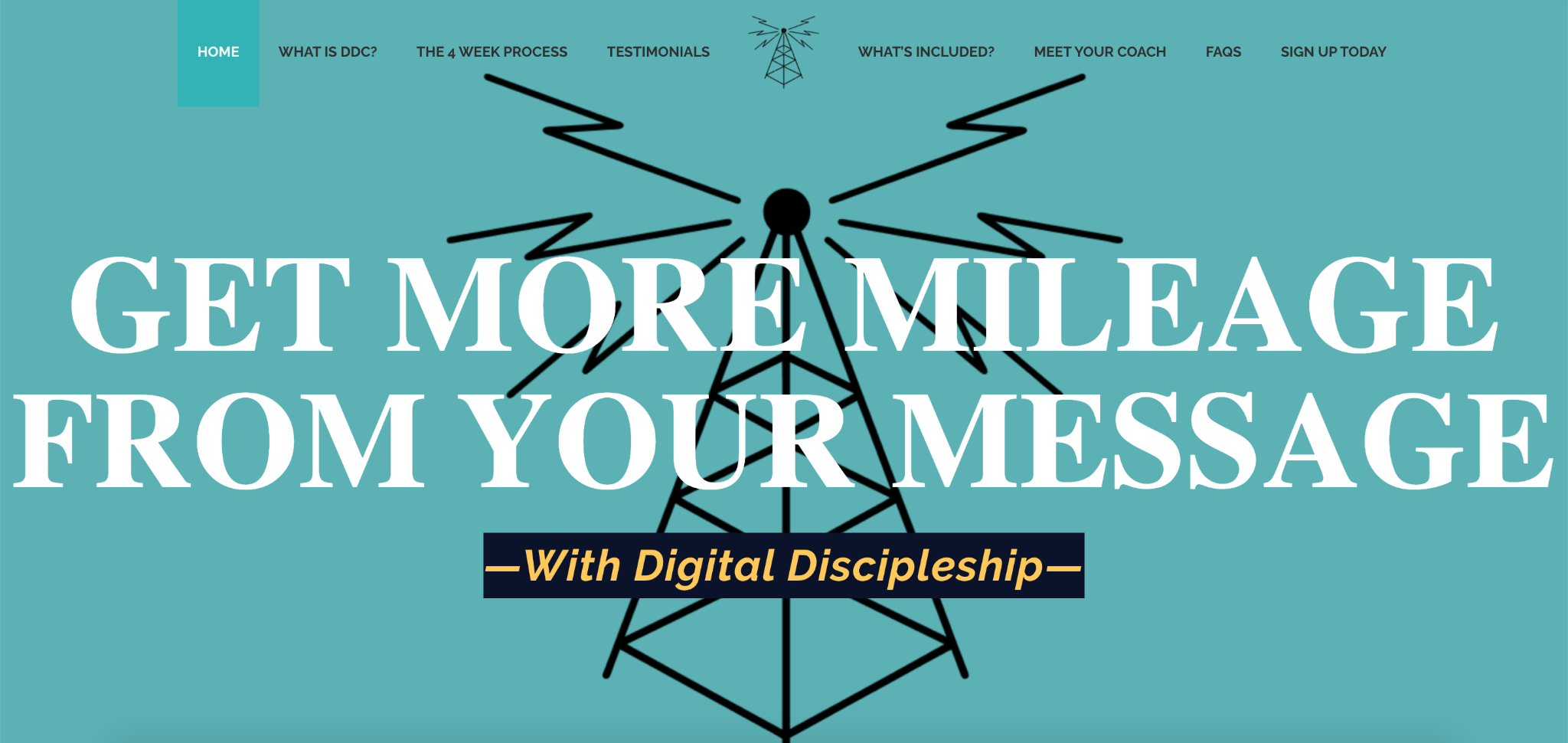By Jesse Barnett
The church is at another pivotal turning point in history. Do you feel it?
Just over two years ago, the world shut down. Since that day, there have been obvious changes like quarantines, working from home, store and restaurant closings, online church, and, in general, the topsy-turvy way we’ve tried to navigate something that’s affected the entire world.
But behind each of those big things is people who have been under stress as they worry about health, finances, global crises, jobs, kids, inflation, politics, and a list of concerns that could go on and on. And when someone is under stress or pressure, it’s only natural that they begin to change.
When individuals change, organizations change. This is as true for the church as it is for your home, business, government, club, or small group.
Most people don’t like change, and understandably so. It’s uncomfortable and disorienting. It pushes us to confront things that have been swept under the rug or pushed aside, especially in the church world. We like our traditions and the way we’ve always done things. We have our favorite seat, our favorite program, our favorite place to serve, our favorite song, and our favorite way to do church. Don’t mess with my church.
Whether we like it or not, though, church has changed. The message is the same, but there’s no doubt church looks different. With or without our approval.
So, we can either resist and struggle or try to adapt and grow.
First, let’s look at some bad news, then we’ll talk about some good news. Finally, I’ll encourage you with an opportunity for the future of your church.
First, the Bad News about Church
Thom Rainer, the Founder and CEO of Church Answers, recently published an article titled Churches Before and After the Quarantine: Five Surprising Metrics. The article focused on the data from a twenty-year study by Faith Communities Today (FACT), part of the Hartford Institute for Religion Research. This study examined over 15,000 congregations between 2000 and 2020, ending just before the pandemic. Church Answers then looked at information from 2021 to compare the data.
Here’s a small overview of what they found:
- Median worship attendance has declined from 137 in 2000 to 65 in 2020. Today it is 55. That’s a 60% decline in two decades.
- The occupancy rate of a typical worship center declined from 33% to 28%. That’s far fewer people in the seats.
- In 2000, 45% of churches were under 100 people. Before quarantine, it was 65%, and now it’s 75%. That’s a lot of small churches.
In fact, Rainer finishes his five metrics list with this line, “We are fast becoming a nation of small churches.”
If all we cared about was data, these would be depressing statistics indeed. Even authors of the FACT report write, “There is no denying that the overall tone of the 2020 findings is rather dismal. The results portray steady decline, shrinking participation, and aging organizations; however, this does not need to spell despair and hopelessness.”
While these statistics are certainly alarming, they aren’t surprising. Actually, at 95Network, these numbers reaffirm the core of our mission:
We exist to connect small and mid-sized churches to health-building resources resulting in equipped churches that equip.
If your church feels stagnant or in decline, we’re here for you! And since our mission is to serve you, let’s move to the good news!
Now, the Good News about Church
Here’s the good news: The Good News is still good news.
There is still a harvest of people ready to hear that Good News.
The hope we have is life-giving and eternal.
The message we share is still saving and transforming lives.
The people in your community still need to hear this message.
The challenge then becomes this: how do you get this transformative message out into a world that isn’t exactly beating down the doors to your church? The answer is found partially by examining how we’ve “done church” over the last two years.
The FACT study authors write, “After nearly two years of experimentation, nontraditional worship, and new routines, congregations are asking, what is the way forward? Many of these congregational trends indicate the need for change.”
Throughout the last two years, you likely had mixed success with streaming your service online, Zoom church, social media strategy, YouTube, home church, and other out-of-the-box ways of doing church. That’s understandable. It wasn’t exactly like we saw the fallout of the pandemic coming. And no seminary I know of teaches you how to preach to a cold, unflinching camera lens. Plus, the people you were trying to reach online were dealing with their own mix of fear, uncertainty, and worry. To say it wasn’t an ideal way to start something new is an understatement.
So give yourself a little grace if it didn’t go as well as you would have liked. It’s okay.
But now, it’s time to move forward with a strategy that works for you. As the authors of the FACT study put it:
Following the past months of creativity and adaptation, now is the perfect time for moving beyond the staid routines of the past, which this data shows were not working very successfully anyway. In the midst of all the unsettledness, now is the ideal moment to sustain the efforts toward innovation.
How innovative you want to get is up to you, but we can provide the tools and connections to help you.
But first…
It’s Time for a Decision
I recently got to sit down and have a face-to-face conversation with a very well-respected voice in church leadership. Although he primarily consults and coaches larger churches on culture and organizational and leadership development—he has roots in and the heart for the smaller church.
My desire is to help pastors multiply the impact and reach of their message, so I sought after his wisdom regarding my Digital Discipleship Coaching program. This is a four-week coaching program I created to help small and mid-sized church pastors quickly develop an engaging digital ministry strategy using the big ideas from their existing Sunday messages.
In our conversation, he acknowledged that there’s a huge need for the church to figure out what comes next and create a plan to reach beyond its walls— a hybrid church model. (If you’ve been to a 95Network One Day Conference, you’ve heard us talk about the importance of a hybrid church strategy.)
He also made a statement that I can’t get out of my mind. Regarding their digital ministry strategy, he said he tells pastors, “You don’t have to do anything you don’t want to do, but you do have to make a decision.”
- For some pastors, the decision is no more online outreach at all. Church happens in person only. (In my opinion, this isn’t the best choice!)
- For others, it’s in-person church that is recorded or streamed online. (A step in the right direction, but probably the lowest return on your time and energy.)
- For still others, it’s in-person church, streamed online, a strategy for creating digital content that engages and connects, a user-friendly and focused website, and a thriving social media community. (Now we’re talking! The best of both in-person and digital.)
Before you start to glaze over and think, I could never do that; I just don’t have the time, the staff, or the energy, let me point you back to the numbers in that study. You don’t have to do anything you don’t want to do, but you do have to make a decision. There’s no real reason to think that those downward trends will reverse direction any time soon.
We need to at least entertain the fact that church can and must look different in the future.
Hybrid Church—A Quickstart Guide
There isn’t time to get into everything here, but what would it look like if you were to investigate a hybrid church model? For starters, it doesn’t mean canceling what you’re doing in person throughout the week.
Shared worship is beautiful. Shared fellowship is life-giving. Shared teaching is equipping.
The local in-person church is critical to communities. So, please, keep doing what’s working!
But also consider that there may be small ways to add value for the people who aren’t walking through your door. The easiest way to do that is to repurpose your message for social media, which is what I teach in Digital Discipleship Coaching.
There are a host of other ways too. Consider this list:
#1 RECORD EVERY MESSAGE AND UPLOAD IT TO YOUTUBE
YouTube is where people go to learn how to do anything. If you’re teaching each week anyway, add your message to your YouTube page, and you’ll create a library of content.
Pro tip: Edit it down to just your teaching (no music, announcements, etc.) to keep things concise and easy to consume.
#2 TURN THE AUDIO OF YOUR MESSAGE INTO A PODCAST
Podcasts are everywhere for a reason—they offer a great way to reach people in the car, in the gym, and while they multitask. A podcast helps you be the voice in their ear.
Pro tip: Look into a tool like Anchor.fm as an easy way to get started.
#3 SIMPLIFY AND SHARE YOUR SERMON NOTES EACH WEEK
Visual learners like to read and react to what they hear. Your notes provide the perfect companion to the audio or video options above. Create a template that you can repurpose each week.
Pro tip: Don’t give away everything. Try to include only the main takeaways and action steps so people can easily put them to work.
#4 TRANSCRIBE YOUR ENTIRE SERMON AUDIO AND SHARE THE TEXT
Some people might like to reread your message and dive deeper or reexamine certain points. The full transcript gives them the ability to do that.
Pro tip: Use a free tool like Otter.ai to transcribe your message into text.
#5 CREATE AND SHARE A WEEKLY RESOURCE LIST
What are the books, videos, podcasts, articles, and other tools you cross-referenced while creating your sermon? Create a weekly list of these tools and share them.
Pro tip: Include links that help people click and go—this makes it easy to find.
#6 CREATE A LOOM SCREENSHARE VIDEO DEMONSTRATING A STUDY TECHNIQUE
This one is a little more nuanced, but if you use an online study tool like Logos Bible Software, create a screen share video showing how you research and prepare parts of your message.
Pro tip: Create an account at Loom.com to create easy-to-share videos right from your desktop or phone.
#7 HIRE A LOW-COST VIRTUAL ASSISTANT TO CREATE SHORT CLIPS FROM YOUR VIDEO
Each week you could send your video file to a virtual assistant and have them pull out two- to three-minute teaching clips to share on social media.
Pro tip: Think about what you can delegate. You could even enlist a younger person in your church who is tech-savvy and willing to help you with this task.
#8 DO A WEEKLY LIVE VIDEO ON YOUR FACEBOOK OR INSTAGRAM PAGE
Live teaching isn’t as hard as it seems. You could take one key point from your message, set your phone on a tripod, and teach “from the Pastor’s desk” each week.
Pro tip: Give yourself a very basic bullet point outline and use it to guide your teaching. Keep it short and sweet and leave them wanting more information.
#9 RECORD AND SCHEDULE SOCIAL MEDIA POSTS IN ADVANCE
With our four-week Digital Discipleship Coaching program, you’ll have the training and tools you need to turn key points from your weekly message into engaging and inviting daily social media posts.
Pro tip: Be authentic. There’s no need to copy anyone else’s style. Be you, and you’ll attract the kind of people you hope to serve with your message.
These are just a few quick ways to reach outside your church and into your community with what you’ve already created. They don’t take a ton of extra time when you have a solid plan.
Let’s Talk About Hybrid Church!
As the Communications Coach for 95Network, I love talking to pastors about ideas like this for their churches! It’s so much fun to create a plan and equip and empower churches to innovate and engage with their communities. (I’d love to talk to you too! Send me an email at Jesse@95Network.org, and we’ll set up a time to chat.)
My heart is for you.
I believe that the best days of your church are ahead of you.
We want to give you the tools you need to help you create a healthy, thriving church that reaches the lost, impacts the Kingdom, provides hope for the future, and makes a difference in your community.
It’s who we are. It’s what we do.
Email Jesse at: Jesse@95Network.org
Be sure to stop by our 95Network.org/online store to find helpful resources designed to encourage and strengthen your ministry leadership.







